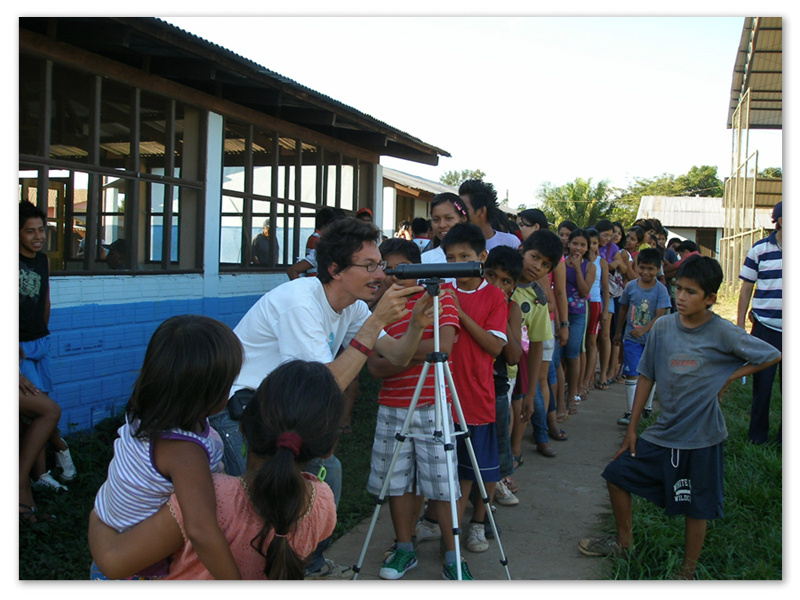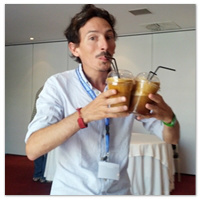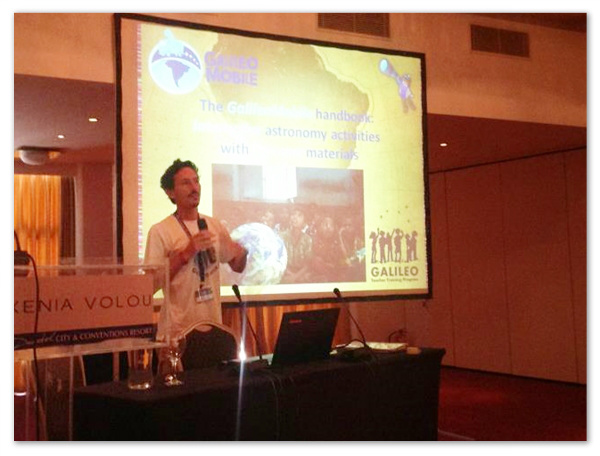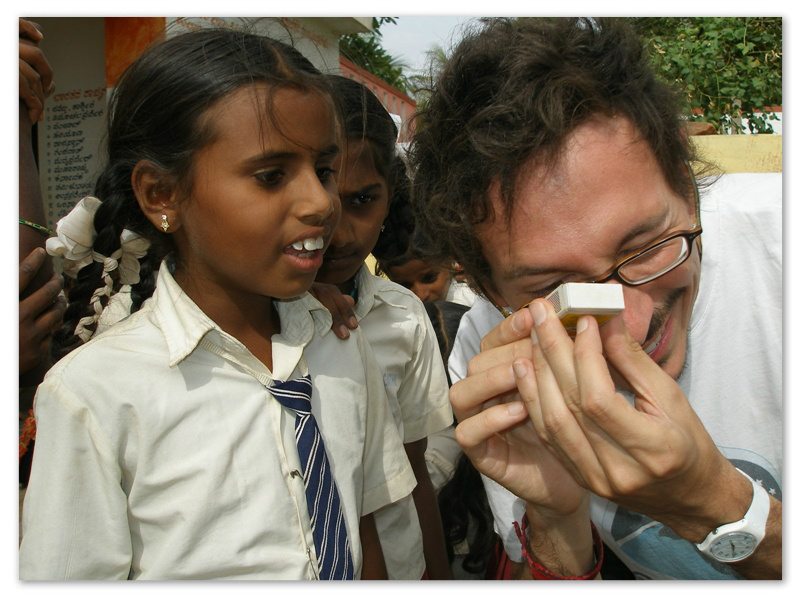During the Global Hands-On Universe 2013 conference, GTTP Communications coordinator; Thilina Heenatigala sat down with Philippe Kobel to discuss his efforts, winning DtC contest and Galileo Mobile.
——
During April 2013, Discover the COSMOS in partnership with Astronomers Without Borders ran a contest where they invited teachers and students around the world to design an activity using images shared between 1 to 20 April by Astronomical Observatory of Coimbra, National Schools Observatory and Faulkes Telescope project.
This contest got attention of Philippe Kobel, an educator from Switzerland. Taking the opportunity, Kobel designed an inquiry-based activity for students to explore an active research topic today – the fluctuations of the sunlight energy (irradiance) and its relation with solar activity. The activity let students to take their own computer-based measurements using Salsa J on a set of recent data from the Astronomical Observatory of Coimbra, Portugal to explain how visible solar features such as sunspots and plages affect the solar irradiance.
The activity will make the students aware that we live next to a fluctuating power plat of (radiant) energy, the Sun which is the source of all life and influence our climate. They will also get acquainted with the process of making physical measurements on real data and the subtleties it involves, such as proper normalization (measurements relative to a reference) and fluctuations due to the effect of varying sky conditions.
This innovating thinking of designing an activity to get students engage in doing real science lead him to win the contest and take part in both Discover the COSMOS Summer School and Global Hands-On Universe conference in Volos, Greece. During his time in Volos, Kobel presented his activity at the summer school and explained how easily it can either fit within “astronomy” or in “energy” topic in the physics curriculum as it involves the concepts of radiant energy, irradiance and the process of taking measurements.
“It’s been a great experience meeting other teachers and educators around the world during the summer school to share our ideas, brainstorm and basically learn from each other’s best practices” added Kobel.
During the GHOU 2013 conference in Volos, Kobel presented “Galileo Mobile” an initiative started in 2009, a long dream of his that became a reality through the help of key persons such as Pedro Russo, Rosa Doran, Kevin Govender and Carolina Odman. With the initial team, Kobel coordinated the program till 2011 and currently leading the educational activities of the project. Notably developments and enchacements of the Galileo Mobile Handbook, resources guide which available for free in English and Spanish.
 Kobel said, “Galileo Mobile team comes from all over the world. When children speak to us and realize that we are friends under the same sky. They understand that astronomy is for everyone, regardless where you come from or which colour you are” and added “Through our expeditions, we are sparking a lifelong learning interest in critical thinking. Our vision is not to create future astronomers but to create a generation of critical thinking human beings. We believe that this sense of critical thinking, sense of marveling about surrounding world, asking questions, widening horizons lead to make the world a better place”.
Kobel said, “Galileo Mobile team comes from all over the world. When children speak to us and realize that we are friends under the same sky. They understand that astronomy is for everyone, regardless where you come from or which colour you are” and added “Through our expeditions, we are sparking a lifelong learning interest in critical thinking. Our vision is not to create future astronomers but to create a generation of critical thinking human beings. We believe that this sense of critical thinking, sense of marveling about surrounding world, asking questions, widening horizons lead to make the world a better place”.
 Passion and enthusiasm sums up Philippe Kobel. He currently shares his time between “Ecole Polytechnique Fédérale de Lausanne”, where he studies the evolution and power of bubbles in variable gravity (bubbles.epfl.ch) and at “Haute Ecole Pédagogique” following Master of Advanced Studies in Secondary Teaching while dedicating time for Galileo Mobile and enjoying Frappé.
Passion and enthusiasm sums up Philippe Kobel. He currently shares his time between “Ecole Polytechnique Fédérale de Lausanne”, where he studies the evolution and power of bubbles in variable gravity (bubbles.epfl.ch) and at “Haute Ecole Pédagogique” following Master of Advanced Studies in Secondary Teaching while dedicating time for Galileo Mobile and enjoying Frappé.
Learn more about Galileo Mobile at: http://galileo-mobile.org
Follow their blog for latest updates: http://galileomobile.wordpress.com/
Support them at: http://galileo-mobile.org/node/30
###


